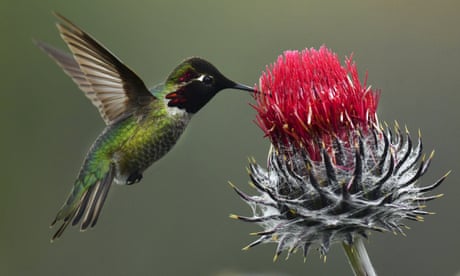- by foxnews
- 08 Apr 2025
Nearly half of planet’s land in need of ‘conservation attention’ to halt biodiversity crisis
Nearly half of planet’s land in need of ‘conservation attention’ to halt biodiversity crisis
- by theguardian
- 03 Jun 2022
- in news

Almost half the planet's land surface needs extra conservation protection if the biodiversity crisis is to be halted, a major new study has found.
At least 64.7 million sq km (25 million sq miles) needs "conservation attention" but overlaps with areas where 1.8 billion people live - about a quarter of the world's population - raising critical human rights challenges for conservationists, communities and governments.
Much of the land area is already covered by some level of protection - such as a national park - or is ecologically intact, but the research finds 12.4 million sq km will need to be added as protected areas.
Later this year, countries are expected to agree to new targets to protect 30% of land and ocean under the UN's Convention on Biological Diversity (CBD) by 2030.
Dr James Allan, who led the new research at the University of Amsterdam, says the study shows the urgency of the biodiversity crisis, as well as the opportunity to act.
"If we act now, we can save these areas. But if we wait, and just talk, then the losses will continue. There is pressure now on governments at the next CBD meeting to move from talk to action."
A previous target under the UN biodiversity convention to protect 17% of land areas and 10% of coastal and marine areas had been "inadequate for halting biodiversity declines and averting the crisis", the authors of the new research argue.
For the study, published in the journal Science, 19 scientists from institutions in the UK, US, Australia, Italy and the Netherlands mapped all the places on Earth that have some protection, or are close to being wilderness areas. They then looked at the extinction risk for species and their geographical distribution.
"This paper shows that you can align big visions of conserving land with people in a way that's sensitive to human rights," Allan said.
In 2019, a UN-backed report said about 1m species were at risk of extinction in the coming decades, as biodiversity was being lost at an unprecedented and alarming rate.
The new analysis found that 44% of the world's land surface needed increased protection - whether through measures such as improving wildfire management, development planning or increasing the size of formally protected national parks.
About 70% of that area was relatively unaltered by humans, but those places were quickly disappearing and needed urgent protection, the research found. Even so-called wilderness areas were at risk, the authors said, from threats such as invasive weeds, fire and climate change.
As much as 1.3 million sq km of land currently intact could be converted to intensive human use by 2030. This problem was most profound in Africa, with the lowest risks in Oceania and North America.
Prof Brendan Wintle, a conservation ecologist at the University of Melbourne and a co-author of the research, said: "The key here is not to focus on the 44% of land area, but to recognise that we need good conservation outcomes across very large proportions of the land surface to conserve biodiversity.
"We should remember, for example, that more than 85% of the planet's wetlands have been lost since 1700. We have more than a million species at risk of extinction and we're seeing extinction rates that are at their highest since the loss of the dinosaurs. Yet we're still seeing drivers of biodiversity loss, like land clearing, continue."
Most of the 1.8 billion people living in the areas that need better protection were in emerging and developing economies which, the authors said, "raises critical questions regarding how conservation strategies can be scaled up without compromising social justice goals".
Dr April Reside, an ecologist at the University of Queensland and another co-author, said the area that needed attention might seem vast, but it was important to remember that "before humans came along and drastically modified the Earth's surface, all of the planet was available for biodiversity".
"But this is not to say that people cannot be in those places and, indeed, in Australia for example, [Indigenous people] have managed landscapes for at least 40,000 years.
"This is about making sure that while humans are now in the landscape, there's attention to biodiversity as well."
Prof Hugh Possingham, another co-author, also at the University of Queensland, said the research was an attempt to build a comprehensive picture "from first principles" of what was currently being protected, and where species were falling through gaps.
"We're losing many species now," he said. "This work is part of what we have to do to get the extinction rate back down to background levels. If we lose a million species by the end of the century then there's no backing out of that.
"Future generations will be looking at pictures of hummingbirds and albatross - things that are in your back garden or in a national park - and to them they'll be like us looking at pictures of dinosaurs. Something like 50,000 generations of people will have to deal with that."
- by foxnews
- descember 09, 2016
Ancient settlement reveals remains of 1,800-year-old dog, baffling experts: 'Preserved quite well'
Archaeologists have recently unearthed the remarkably well-preserved remains of a dog from ancient Rome, shedding light on the widespread practice of ritual sacrifice in antiquity.
read more


